

 Experimenting with summer wines
Experimenting with summer wines
Do we drink differently in summer? To some extent yes. Especially if it’s a hot summer. Which is not always the case. But if it is hot and you eat outdoors, we think there are two important things to keep in mind: the first is the temperature of the wines and the second is to save your very best wines for another day.
But otherwise, yes, it will be the food that decides. But maybe not…
Many tend to focus a little bit too much on food and wine pairing, which wine will go with which food. But in reality, it is more complicated than that, or rather, simpler (!) than that.
Which wine goes best with the food depends not only on the food (is it salty, much acidity, fried or stewed, spices etc, etc.) but also (perhaps more?) on the weather, your mood, the season, the company, on personal preferences and much else. If you are into biodynamics then you should also think of whether it is a root or flower day…
The summer is actually a perfect time to discover new food and wine combinations. Perhaps the heat makes you more inclined to drink a white than a red wine and then you can discover combinations you have not thought of before.
A white wine with grilled meat? Yes, absolutely. It works fine.
Perhaps you’d then prefer a full-bodied white, with mouthfeel and structure. Or why not with some skin maceration, with a little bit of tannin (some call them “orange”). Unlike aromatic whites, which have a prominent nose but less flavour (somewhat generalising), these wines are discreet on the nose but are rich and fat in taste.
The “fatness” in the wine can come from the oak but some grapes have it naturally. Like white Languedoc-Roussillon and Rhône wines, with grapes such as grenache blanc, marsanne, roussanne, maccabeu. They are fat and full-bodied all by themselves without the need for oak. Perfect food wines and also with meat.
But if you belong to those who absolutely want a red wine to the grilled entrecote or the grilled lamb chops, then there are different options. Whether you choose a strong, full-bodied wine or lighter style of red, think about the temperature well in advance.
A warm summer evening we like to chill even a powerful red wine with a lot of fruit and structure to 14-16 degrees C. Then it will be fresh instead of a heavy and cloying.
Don’t be afraid to try unusual combinations of food and wine. It almost always works. When you are with producers in wine regions they often have a very relaxed attitude to such things, rather than rules and principles. On the wine tour to Etna in Sicily this spring, for example, we were served the red prestige wine from one of the producers to the sweet dessert. That worked well too. The lovely lunch table on the terrace, overlooking the vines and the volcano probably helped.
A big misconception is that it is quick to cool a bottle of wine in the refrigerator. It is not. If you start at room temperature and are aiming at 6-8 degrees Centigrade, you have to wait at least 3 hours. Longer if you start at summer room temperature. And a little longer for a champagne with its thick bottle. Although it is a waste to serve good sparkling, or other better white wines, at less than 12 degrees C. Then you hide most of the characters with the exaggerated cold.
Now, six degrees C may be too cold for a red wine. But not always. In France, there is a long tradition of serving red Loire wines directly from the fridge. And Beaujolais. It’s not a bad idea on hot summer days/evenings. The temperature rises rapidly in the glass anyway. This really applies to all reds that are, if not simple, so at least unpretentious.
The fridge is good for those who plan well ahead. For the rest of us, luckily there is the combination of ice, water and an ice bucket. Or you can put the bottle a short time in the freezer. Oh yes. Read more in the Brief about how to temperate wine.
One thing to avoid is to serve your treasures from the cellar at the summer’s barbecue dinners. These are not made for outdoor use. There are too many things competing with the wine’s aroma outdoors. It easily disappears with the wind, even if it is only a small breeze. Often, much of the subtle characters disappear outdoors (so a serious wine tasting should always be indoors). Best to let the dusty old bottles remain where they are until autumn. Which is really, really far away.
But even if the autumn is far away, it is important to think about it already, because….
Because it is high time to book your autumn wine tour!
We have some places left on some of the autumn tours, though not at all. Take a look at the program below and book now!
For those of you who want to come on our longer wine adventures this winter – to South America, to South Africa or to New Zealand – it is also high time to book. (South America is actually already fully booked.) Book your winter wine tour now!
And remember, if you want a truly unique wine experience, one that takes you to the genuine wine producers, takes you behind the scenes, takes you to personal meetings with the winemakers – one that is not only famous names and marketing driven labels – then you should travel with the wine experts and the wine tours specialist, BKWine Wine Tours.
Have a lovely July,
Britt & Per
PS: Recommend to your friends to read the Brief !
– – – – –
What’s on at BKWine Tours
2019
- Champagne, September 11-15, 2019
- Bordeaux, October 2-6, 2019
2020
- Chile and Argentina, January 20 – February 2, 2020
- South Africa, February 15-23, 2020
- New Zealand, March 9-24, 2020
- More to come
For more information please contact us on email or on phone (we’re on French time), or go to our wine travel site on www.bkwinetours.com!
We also make custom designed wine tours – on-demand tours for you and a group of friends, for your company (maybe to scout new winegrowers?), for a special event… We can combine winery visits and wine touring with other activities: gastronomic workshops, visit to an oyster farm, truffles hunting, cheese making, and more. More info on the custom designed and bespoke BKWine wine tours and travel here!
Read our book(s)
We have written several wine books, nine at the last count. One of them has been translated to English; the others are (so far) only available in Swedish. This is the one that is available in English: Biodynamic, Organic and Natural Winemaking, Sustainable Viticulture and Viniculture
All our books are on wine, but on different subjects: wines of the Languedoc, wine growing and wine making, the wines of France, Tuscany, Bordeaux, Piedmont, Burgundy, Champagne. Several have won prestigeous prizes and awards. Read more on our wine books.
From the World of Wine
In Brief
In short, news and stuff from the world of wine.
How to avoid drinking warm red wines this summer
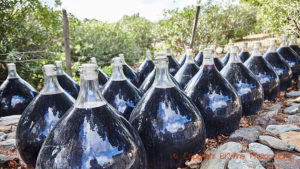 No, we’re not going to tell you “stick to white” and certainly not “go for rosé”. But we all hope for a warm and nice summer. And the warmer it is, the more important it is to ensure that the wines are served well chilled. Wines are sometimes mistreated in the summer. Having a red wine at 30 degree Celsius is no fun. If you are at home, then it is quick to chill a wine in the freezer and even faster in a bucket with ice cubes and water. A glass of wine can be cooled down by putting an ice cube in the glass (pick up before it melts too much).
No, we’re not going to tell you “stick to white” and certainly not “go for rosé”. But we all hope for a warm and nice summer. And the warmer it is, the more important it is to ensure that the wines are served well chilled. Wines are sometimes mistreated in the summer. Having a red wine at 30 degree Celsius is no fun. If you are at home, then it is quick to chill a wine in the freezer and even faster in a bucket with ice cubes and water. A glass of wine can be cooled down by putting an ice cube in the glass (pick up before it melts too much).
Just remember, though, that it takes a long time to cool a bottle of wine in a refrigerator. It takes around three hours to bring down the temperature from 22 C to 6 C. Read more about chilling and warming up wines (chambré) here: Serve your wine at the right temperature.
Early flowering in Bordeaux. And early harvest as well?
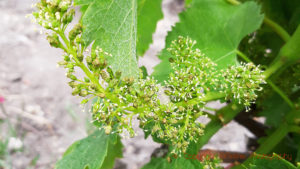 During flowering, the winegrower looks anxiously at the weather forecast. The flowering takes place, depending on the region, from the end of May until the end of June. This year it was early in some places in France, for instance in Bordeaux. When we were there on the first days of June it was in full swing and it is interesting to see it because it is quite unusual to come exactly during this period. The flowers are small and you have to look closely to see them. It is important that the weather stays fairly warm and dry during the flowering so that pollination goes smoothly.
During flowering, the winegrower looks anxiously at the weather forecast. The flowering takes place, depending on the region, from the end of May until the end of June. This year it was early in some places in France, for instance in Bordeaux. When we were there on the first days of June it was in full swing and it is interesting to see it because it is quite unusual to come exactly during this period. The flowers are small and you have to look closely to see them. It is important that the weather stays fairly warm and dry during the flowering so that pollination goes smoothly.
The vine is a self-pollinating plant so insects are not needed. But there are diseases that can strike if the weather is bad. Some grape varieties can be affected by e.g. coulure. Bunches will then contain fewer grapes than normal. Early flowering often means early harvest. But not always.
Travel: Come to Bordeaux on a wine tour this autumn.
Nicolas Feuillatte buys Champagne Henri Abelé
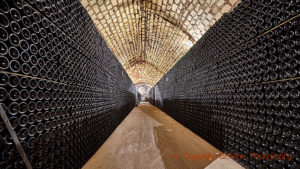 Champagne’s largest cooperative Nicolas Feuillatte is getting even bigger. Feuillatte recently bought the champagne brand Henri Abelé, which, since 1985, has been owned by the huge Spanish cava producer Freixenet. Henri Abelé sells around 300,000 bottles annually. The house has beautiful cellars in Reims. It does not own any vineyards. Instead, it has long-term contracts with a number of grape growers, mainly in Montagne de Reims and the Côte des Blancs.
Champagne’s largest cooperative Nicolas Feuillatte is getting even bigger. Feuillatte recently bought the champagne brand Henri Abelé, which, since 1985, has been owned by the huge Spanish cava producer Freixenet. Henri Abelé sells around 300,000 bottles annually. The house has beautiful cellars in Reims. It does not own any vineyards. Instead, it has long-term contracts with a number of grape growers, mainly in Montagne de Reims and the Côte des Blancs.
Nicolas Feuillatte produces around 10 million bottles of champagne a year, making the cooperative the third largest champagne producer after Moët & Chandon and Veuve Clicquot. But Feuillatte is the biggest one on the French market. Read more rayon-boissons
Travel: Come on a bubbly wine tour to Champagne this autumn.
Corsican wine region bans glyphosate
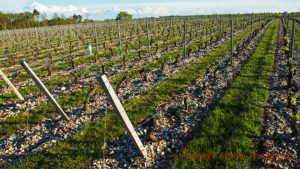 The discussion about the future of glyphosate continues. It is very contested if glyphosate is dangerous or not at all dangerous (when properly used). In 2022, it will again be on the EU agenda, until then it is allowed. But France (at least the government, but not all farmers) wants to ban glyphosate before that. In the meantime, some winegrowers take matters into their own hands. In Corsica, the appellation Patrimonio has decided to totally ban glyphosate from its vineyards.
The discussion about the future of glyphosate continues. It is very contested if glyphosate is dangerous or not at all dangerous (when properly used). In 2022, it will again be on the EU agenda, until then it is allowed. But France (at least the government, but not all farmers) wants to ban glyphosate before that. In the meantime, some winegrowers take matters into their own hands. In Corsica, the appellation Patrimonio has decided to totally ban glyphosate from its vineyards.
The ban will be added to the appellation rules for Patrimonio in 2021. And it will apply to the entire vineyard, including steep slopes and underneath the vines. Instead, the wine producers can for instance plough or just leave the weed to grow or sow a suitable cover crop. More appellations seem to be onto the same idea, both in France and in Italy. Glyphosate is the active ingredient in the well-known Roundup product. Read more: vitisphere
Read: Read more on vineyard spraying in our book Organic, biodynamic and natural winemaking.
Exceptional vintage 2019 in New Zealand
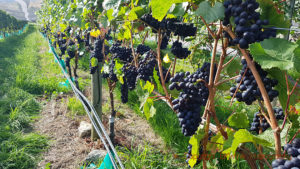 We came to New Zealand in March earlier this year, just when the 2019 harvest was about to begin. We saw lots of fine grape bunches and we had the feeling that it would be a good harvest, a great vintage. And it was. In fact, 2019 is an exceptional vintage, in all regions, from the northernmost on the North Island to the southernmost on the South Island. The summer was long and warm with just the right amount of cool temperatures during the nights. Very good conditions for good maturity and good acidity. However, the volumes were less than expected. Read more: nzwine
We came to New Zealand in March earlier this year, just when the 2019 harvest was about to begin. We saw lots of fine grape bunches and we had the feeling that it would be a good harvest, a great vintage. And it was. In fact, 2019 is an exceptional vintage, in all regions, from the northernmost on the North Island to the southernmost on the South Island. The summer was long and warm with just the right amount of cool temperatures during the nights. Very good conditions for good maturity and good acidity. However, the volumes were less than expected. Read more: nzwine
Travel: Come and experience New Zealand with us on the wine tour in March 2020!
Where is turruntés grown? In Rioja of course!
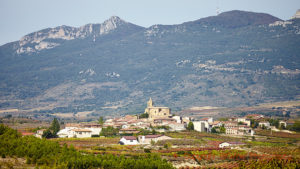 Yes, turruntés, not torrontes. Rioja is best known for its red wines. But that is no reason to ignore the whites. You can find them in different styles. They can be seriously full-bodied wines with lots of mouthfeel or fresh and floral everyday wines. To put white wine in oak barrels is an old tradition in Rioja. In recent years, they have also begun to ferment in oak barrels and age on the lees.
Yes, turruntés, not torrontes. Rioja is best known for its red wines. But that is no reason to ignore the whites. You can find them in different styles. They can be seriously full-bodied wines with lots of mouthfeel or fresh and floral everyday wines. To put white wine in oak barrels is an old tradition in Rioja. In recent years, they have also begun to ferment in oak barrels and age on the lees.
The surface area for white grapes in Rioja fell steadily between 1985 and 2014 but has since started to increase again. In 2014, there were 3,884 hectares, now there are 5,965 hectares. In total Rioja has 65,000 hectares. The white grapes are Viura (70% of the acreage), Tempranillo Blanco (12%, a mutation of red Tempranillo discovered in 1988), Verdejo (5%) Garnacha Blanca (3%), Sauvignon Blanc (3%) Malvasia de Rioja (2%) and Chardonnay (2%). In addition, there are small plots of Maturana Blanca and Turruntés. Interesting grapes that you should try if you get the chance. The spelling torrontés is perhaps more familiar, but that is a totally different aromatic grape variety in Argentina. Read more riojawine
Violent hail storm destroys vineyards in Crozes-Hermitage
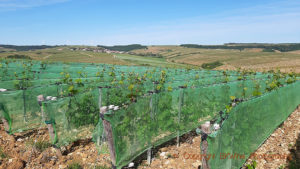 Hail storms can be violent and the 20-minute storm that affected Crozes-Hermitage and part of Saint Joseph on June 15 was exceptionally violent. Some winegrowers saw their future harvest reduced by at least 50%. The hail storm then continued to Savoie and into Switzerland where the damaged continued. The hailstones were of a size that had rarely, perhaps never, been seen before in the area.
Hail storms can be violent and the 20-minute storm that affected Crozes-Hermitage and part of Saint Joseph on June 15 was exceptionally violent. Some winegrowers saw their future harvest reduced by at least 50%. The hail storm then continued to Savoie and into Switzerland where the damaged continued. The hailstones were of a size that had rarely, perhaps never, been seen before in the area.
Hail is becoming more and more frequent and so are the different ways of protecting the vineyards. Some vineyards in the northern Rhone Valley are protected by a new technology from the two companies Selerys and Lacroix Defense. When hail is imminent, the wine producers send balloons inflated with helium into the clouds. Up there, at perhaps 600 meters altitude, the balloons release their cargo with hygroscopic salt which, if all goes well, provokes rain instead of hail or in any case diminishes the size of the hailstones. The technology is combined with advanced radar that warns when hail is approaching. In France, they are also experimenting with more low-tech methods, such as hail nets. Read more selerys
The incredible success of rosé wines
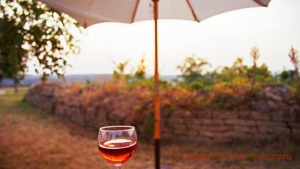 No summer without rosé wines? Well. Anyway, people will drink a lot of rosé wine this summer, worldwide. World rosé consumption increased by 32% between 2002 and 2018. France drinks the most. One-third of all rosé wines made in the world is drunk in France (don’t forget there’s a lot of tourists in France). France also is the biggest producer of rosé wines. The country accounts for 28% of world production.
No summer without rosé wines? Well. Anyway, people will drink a lot of rosé wine this summer, worldwide. World rosé consumption increased by 32% between 2002 and 2018. France drinks the most. One-third of all rosé wines made in the world is drunk in France (don’t forget there’s a lot of tourists in France). France also is the biggest producer of rosé wines. The country accounts for 28% of world production.
Spain also makes a lot of rosé. But the French are better at charging money for their rosé wines than the Spaniards. France accounts for 16% of the world’s exports of rosé wine in volume, but 32% counted in value. For Spain, it is the other way around. It accounts for 39% of the volume but only 15% of the value. Spain, and also South Africa, sell lots of simple rosé wine in bulk at low export prices, sometimes as little as 30 euros per hectolitre (30 cents per litre). The United States is the country that pays the most for its rosé, an average of 3.80 euros per imported bottle. The UK pays 1.70 and Sweden 2 euros. Read more franceagrimer
Features
Features that we have published during the past month, with lots of reading for you.
Kuntz, making magic riesling in the Mosel
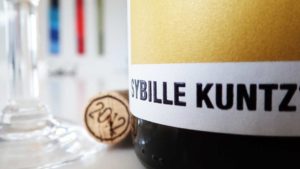 When the corkscrew slowly works its way down, you probably have quite a good idea of what is in the bottle. Probably one of your favourite wines from a trusted producer, or at times, a recommendation from a wine friend. But how often do you totally leave your comfort zone? Sybille and her husband, Markus Kuntz-Riedlin, visited Stockholm last November 2018. Then, just like now, a range of high-quality rieslings was on the table from the Mosel and exciting spätburgunders from Baden. But this time, early summer 2019, two new and very exciting bottles were included.
When the corkscrew slowly works its way down, you probably have quite a good idea of what is in the bottle. Probably one of your favourite wines from a trusted producer, or at times, a recommendation from a wine friend. But how often do you totally leave your comfort zone? Sybille and her husband, Markus Kuntz-Riedlin, visited Stockholm last November 2018. Then, just like now, a range of high-quality rieslings was on the table from the Mosel and exciting spätburgunders from Baden. But this time, early summer 2019, two new and very exciting bottles were included.
Read more in Sven-Olof Johansson’s article on BKWine Magazine: Sybille Kuntz – a traditionalist open to new trends.
Three generations of pioneers at Champagne J Lassalle | Britt on Forbes
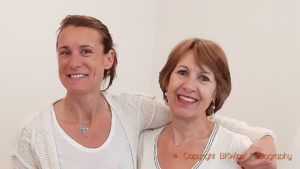 Champagne J. Lassalle started to export to the United States already in the 1970s. It was one of the first independent Champagne growers to be sold in the US. Today, a big part of the family’s production goes to the US market. The estate is run by Angéline Templier and her mother Chantal Lassalle. Grandmother Olga is 99 years old and still going strong.
Champagne J. Lassalle started to export to the United States already in the 1970s. It was one of the first independent Champagne growers to be sold in the US. Today, a big part of the family’s production goes to the US market. The estate is run by Angéline Templier and her mother Chantal Lassalle. Grandmother Olga is 99 years old and still going strong.
Read more on Britt’s article on BKWine Magazine, originally published on Forbes: Champagne J. Lassalle: Special champagnes from a pioneering grower run by three generations women | Britt on Forbes.
Travel: Come on a bubbly wine tour to Champagne this autumn.
How do Scandinavian wines compare to Italian?
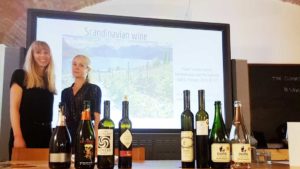 Scandinavian wines are getting better and better. But how do they manage to cope in comparison to wines from traditional wine countries? BKWine Magazine’s two guest writers Åsa Johansson and Sara Nässén decided to find out. They arranged a tasting of Danish and Swedish wines in comparison with Italian counterparts for a group of students at the Master in Wine Culture and Communication at the UNISG in Pollenzo in Piedmont.
Scandinavian wines are getting better and better. But how do they manage to cope in comparison to wines from traditional wine countries? BKWine Magazine’s two guest writers Åsa Johansson and Sara Nässén decided to find out. They arranged a tasting of Danish and Swedish wines in comparison with Italian counterparts for a group of students at the Master in Wine Culture and Communication at the UNISG in Pollenzo in Piedmont.
The result was surprising and perhaps not quite as expected. Read more about Scandinavian wines and about the tasting in Sara’s article on BKWine Magazine: Scandinavian wines come to Piedmont.
Summer reading: delicious wines from Languedoc-Roussillon
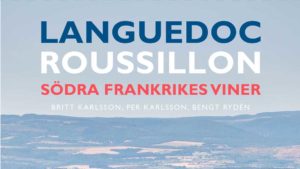 Languedoc-Roussillon, the Wines of Southern France is our latest book. Our tenth book. It is about one of the “hottest” and most dynamic wine regions in France. It is the first book in Swedish that talks of both of these districts, the Languedoc, which is the northern part, and Roussillon, which borders Spain. Languedoc-Roussillon is an exciting wine district, dynamic and evolving, there are many young and ambitious wine producers. This is the perfect summer reading for anyone who wants to be inspired, who wants to find new and delicious wines, or for the one who sets out to travel in southern France.
Languedoc-Roussillon, the Wines of Southern France is our latest book. Our tenth book. It is about one of the “hottest” and most dynamic wine regions in France. It is the first book in Swedish that talks of both of these districts, the Languedoc, which is the northern part, and Roussillon, which borders Spain. Languedoc-Roussillon is an exciting wine district, dynamic and evolving, there are many young and ambitious wine producers. This is the perfect summer reading for anyone who wants to be inspired, who wants to find new and delicious wines, or for the one who sets out to travel in southern France.
We have (at last) published detailed info about our new book on the Languedoc-Roussillon, including a video presentation, on BKWine Magazine: Here’s the new book “Languedoc-Roussillon, the Wines of Southern France”, summer reading!
Uncorked: Good wines we have tasted recently, June 2019
 Under this heading, we collect various wines that we have tasted, and liked, recently. It can be wines that we have had during dinner at home, at wine tastings, press lunches, visits to vineyards, or other occasions. This month: A Bordeaux 1982, bottled in Sweden, probably the last one from our cellar. An old Müller-Thurgau that really took our breath away. Several interesting and delicious wines from Moldova, for many a new wine country. And more Bordeaux, Etna, Languedoc, Chile, Spain … And a Zinfandel from Napa Valley that surprised us.
Under this heading, we collect various wines that we have tasted, and liked, recently. It can be wines that we have had during dinner at home, at wine tastings, press lunches, visits to vineyards, or other occasions. This month: A Bordeaux 1982, bottled in Sweden, probably the last one from our cellar. An old Müller-Thurgau that really took our breath away. Several interesting and delicious wines from Moldova, for many a new wine country. And more Bordeaux, Etna, Languedoc, Chile, Spain … And a Zinfandel from Napa Valley that surprised us.
Read more on these and others on BKWine Magazine: Uncorked: Good wines we have tasted recently, June 2019.
Wine tours
Some information about current and future wine tours with BKWine.
Champagne stories and history enhances the wine experience | wine tour
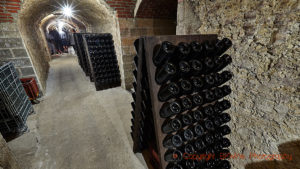 About 2 billion bottles of sparkling wine are produced in the world each year. Champagne accounts for 15% of this volume. The demand for bubbles has increased by 30% in ten years and it shows no sign of slowing down. Champagne’s competitors are getting better and better. But we definitely believe that Champagne will retain its special position in the world of sparkling wines. No other region comes close to the history and prestige that Champagne has accumulated over 400 years. And this counts. We don’t just drink a glass of champagne; we imbibe the whole story. It may be the story of how Dom Pérignon came to the monastery of Hautvillers, or of the widow Clicquot who invented le pupître, or of Adolphe Jacquesson who invented the muselet (the wire cage). In Champagne, history is alive, even when visiting producers with state-of-the-art equipment.
About 2 billion bottles of sparkling wine are produced in the world each year. Champagne accounts for 15% of this volume. The demand for bubbles has increased by 30% in ten years and it shows no sign of slowing down. Champagne’s competitors are getting better and better. But we definitely believe that Champagne will retain its special position in the world of sparkling wines. No other region comes close to the history and prestige that Champagne has accumulated over 400 years. And this counts. We don’t just drink a glass of champagne; we imbibe the whole story. It may be the story of how Dom Pérignon came to the monastery of Hautvillers, or of the widow Clicquot who invented le pupître, or of Adolphe Jacquesson who invented the muselet (the wire cage). In Champagne, history is alive, even when visiting producers with state-of-the-art equipment.
Read more about the Champagne wine tour, 11-15 September 2019. Book now!
An unforgettable tour and meetings with amazing people | wine tour in South Africa
 South Africa has so much to offer that it is difficult to know where to start. Wine-wise, the country has evolved tremendously and now finally people are beginning to realize that the country can do more than just export inexpensive bulk wine. But it has taken time and there is still a lot to do. Wine lovers need to pay more attention to the quality wines of South Africa. There is a plethora of producers who make wines with personality. We know wine growers who search for old, abandoned vineyards, restore them and make superb wines from these old vines. There are so much ambition and pioneering spirit. And after a few years of severe drought, the dams in the Western Cape, where the vineyards are located, have now been replenished and everyone is looking forward to a good season up to the harvest in early 2020. When we get there, the producers will be in the starting blocks for the harvest. We will visit Franschhoek, Stellenbosch, Hermanus down by the coast and, of course, also magnificent Cape Town and Table Mountain. We will enjoy high-quality meals, most of them at the wineries. South Africa is worth a trip! Go there with us this winter!
South Africa has so much to offer that it is difficult to know where to start. Wine-wise, the country has evolved tremendously and now finally people are beginning to realize that the country can do more than just export inexpensive bulk wine. But it has taken time and there is still a lot to do. Wine lovers need to pay more attention to the quality wines of South Africa. There is a plethora of producers who make wines with personality. We know wine growers who search for old, abandoned vineyards, restore them and make superb wines from these old vines. There are so much ambition and pioneering spirit. And after a few years of severe drought, the dams in the Western Cape, where the vineyards are located, have now been replenished and everyone is looking forward to a good season up to the harvest in early 2020. When we get there, the producers will be in the starting blocks for the harvest. We will visit Franschhoek, Stellenbosch, Hermanus down by the coast and, of course, also magnificent Cape Town and Table Mountain. We will enjoy high-quality meals, most of them at the wineries. South Africa is worth a trip! Go there with us this winter!
South Africa, February 15-23, 2020. Book your wine tour to South Africa now!
Discover both the wine-lands and the country of New Zealand | wine tour
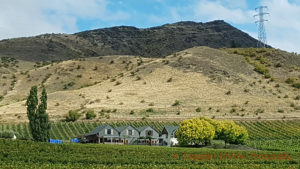 New Zealand is far away. Far from everything. Therefore, this tour is the longest we have on our program. But it will still feel too short, once you’re there! There is so much to see. We mix wine visits and wine tastings with Maori culture, geysers, glaciers and sightseeing in for instance Wellington, the capital. In North Island, we visit Hawke’s Bay (fantastic Syrah!) and Martinborough before we take the ferry to South Island where our first wine region is famous Marlborough where we will taste Sauvignon Blanc, but not only. New Zealand is so much more than Sauvignon Blanc! Central Otago with its delicate Pinot Noir – and spectacular scenery – will not be left out (it’s the birthplace of bungee jumping!). We will travel by bus all the way from Auckland to Queenstown. We will see a lot of the country. An unforgettable journey. An adventure. Come with us this winter to New Zealand.
New Zealand is far away. Far from everything. Therefore, this tour is the longest we have on our program. But it will still feel too short, once you’re there! There is so much to see. We mix wine visits and wine tastings with Maori culture, geysers, glaciers and sightseeing in for instance Wellington, the capital. In North Island, we visit Hawke’s Bay (fantastic Syrah!) and Martinborough before we take the ferry to South Island where our first wine region is famous Marlborough where we will taste Sauvignon Blanc, but not only. New Zealand is so much more than Sauvignon Blanc! Central Otago with its delicate Pinot Noir – and spectacular scenery – will not be left out (it’s the birthplace of bungee jumping!). We will travel by bus all the way from Auckland to Queenstown. We will see a lot of the country. An unforgettable journey. An adventure. Come with us this winter to New Zealand.
New Zealand, March 9-24, 2020. Book your wine tour to New Zealand now!
Don’t be an egoist! Share with your friends and other wine enthusiasts! Forward the Brief to your friends! Suggest that they sign up for a free subscription !
© Copyright BKWine






